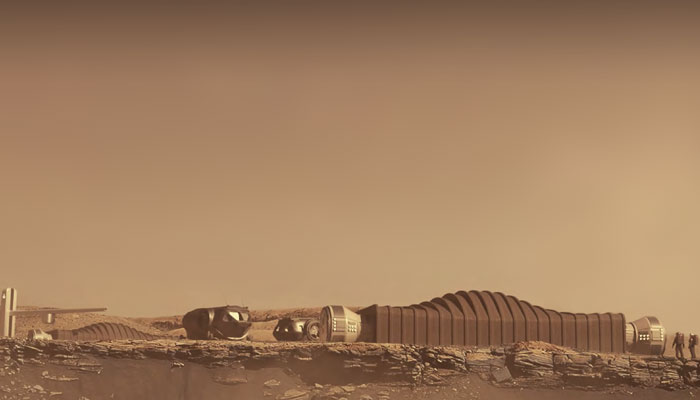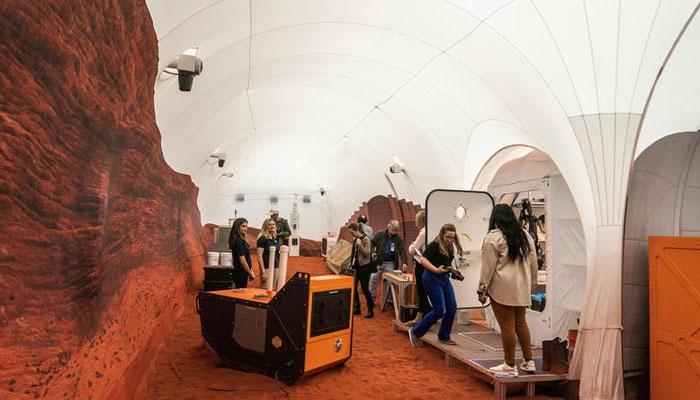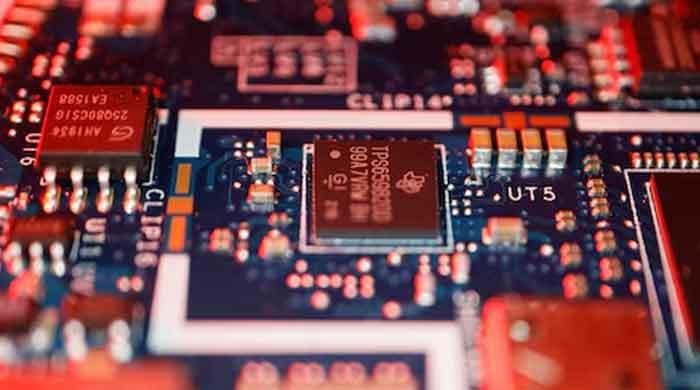Nasa to initiate simulation to ensure safe arrival, survival on Mars
"Aiming for fidelity has resulted in a habitat that could feasibly be built on Mars," says an expert
May 18, 2023

One of the major challenges faced by the scientists about landing on Mars is how they would sustain life once they arrive on the red planet. To deal with this problem, Nasa has built a simulated mission Crew Health and Performance Exploration Analog (CHAPEA) in which it will isolate four of its people in a base located in Texas, reported CNN.
The people will spend 378 days in the simulated environment — the same of number days the scientists are to spend on Mars.
They will start acting as if they are on actual Mars including activities like fixing and maintaining equipment. They will also undergo psychological testing.
The first Mars simulation is to start in June, while Nasa has planned two more till 2026.
Scott M Smith, co-investigator for CHAPEA said: "We've built a high-fidelity Mars surface mission scenario."
They will experience a delay of 22 minutes in communication as would occur on Mars. The ambience will also be created as if they are hearing the voices from space.

Smith added that aiming for fidelity has resulted in a habitat that could feasibly be built on Mars.
The base, called "Mars Dune Alpha," is a custom design by Bjarke Ingels Group and 3D-printing company ICON, and resides inside a hangar at the Johnson Space Center in Houston, Texas.
Printed in a month from ICON’s concrete formula dubbed "Lavacrete," on Mars, the idea is to build using Martian soil, or regolith.
"The separation of the living area with the work area was very intentional," Smith said.
"That was one of the comments that [the designers] heard from International Space Station [ISS] crews … when you’re living in the office, literally having the ability to physically separate was important."
Nasa is making efforts to overcome the knowledge gaps that are making the Martian mission risky.
According to Smith, there are four red risks: “Radiation; SANS [Spaceflight-Associated Neuro-ocular Syndrome, a swelling of the eyeball that affects the majority of astronauts during long periods in microgravity]; crew behaviour and performance; and food and nutrition.”
"Those are risks that in my mind represent things that, if we had a vehicle on the launchpad today to go to Mars, we would advise against the trip," he added.
The journey to Mars is calculated to take between six and nine months.
"The last food will be eaten about five years after we launch it," Smith explained.
"If you think about packing up your pantry with food that’s going to sustain you over the next five years, that’s a challenge."
Smith also added that participants will also grow vegetables using a hydroponic system – both a psychological and nutritional boost.
"We’re looking at essentially all elements of physiology," noted Smith while talking about human examination while on the mission.
After the completion of the simulation, the participants will be undergoing medical checkups at Johnson Space Center.
"It takes a certain dedication to be willing to spend a year with us," Smith said while adding that "not everybody’s cut out for this mission."
There are also other analogues working in different places such as in UAE also designed by Bjarke Ingels Group, with 3D-printed buildings.
Another is Mars Desert Research Station in Utah in which people have simulated for seven and a half years on Mars.
The most famous one is Mars 500 which is done in collaboration with the European Space Agency and the Russian Institute for Biomedical Problems. It is located outside Moscow and resulted in 520 days of mock Mars missions from 2010-11.
"On the Artemis missions they will be exposed to greater radiation, so there may be some lessons learned, even though those will be – at least in the early phases – shorter duration," noted Smith.
"The idea that we’ll ever be able to get the risk down to zero is a long shot," he said. "But we’ll do what we can."











